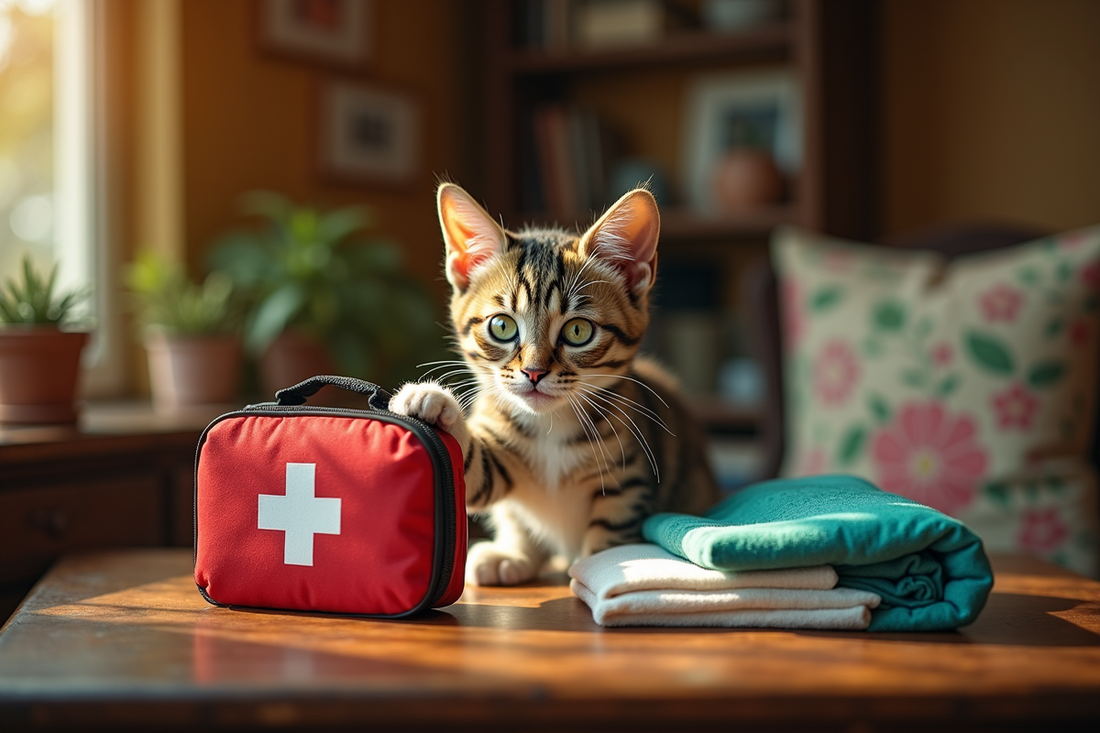The Ultimate Guide to Creating an Emergency Preparedness Kit for Your Cat
In the face of natural disasters and unforeseen emergencies, ensuring the safety of our feline companions is paramount. This guide will equip you with the essential knowledge to assemble a comprehensive emergency preparedness kit for your cat, safeguarding their well-being during critical times.
Key Takeaways
- Understanding the specific needs of cats during emergencies is crucial for effective preparedness.
- Essential kit components include food, water, medications, and comfort items.
- Regularly update and maintain your kit to ensure readiness at all times.
- Consider both commercial and DIY options when assembling your kit.
- Utilize expert resources and community networks for additional support.
Understanding Emergency Preparedness for Cats
Identifying Emergencies That Affect Cats
Natural disasters such as fires, floods, hurricanes, and earthquakes pose significant threats to cats. These events can lead to sudden evacuations, requiring quick action to ensure your pet's safety. Human-caused emergencies, including power outages and evacuations, also demand preparedness. Additionally, health emergencies specific to cats, such as sudden illnesses or injuries, necessitate having a well-stocked emergency kit on hand.
The Necessity of Emergency Preparedness Kits for Cats
While humans and pets share some emergency needs, cats have unique vulnerabilities. They may become stressed or frightened during crises, making it essential to have a ready kit. A well-prepared kit reduces stress, enhances safety, and increases the chances of survival for your feline friend.
Core Components of a Cat Emergency Preparedness Kit
Essential Food and Water Supplies
Ensure you have enough dry and wet food to last several days. Safe water storage is crucial; consider using sealed containers or bottled water. Opt for travel-friendly food and water containers to facilitate easy transport during evacuations.
Medications and Medical Records
Store prescription medications securely, keeping them in their original packaging with clear labels. Copies of vaccination and medical records are vital for any emergency situation. Include a first aid kit tailored for cats, containing items like bandages, antiseptic, and tweezers.
Shelter and Comfort Items
Portable cat carriers and safe harnesses are essential for transport. Familiar blankets or towels provide comfort and a sense of security through scent. Don't forget a litter box and litter supplies suitable for emergency use.
Identification and Documentation
Ensure your cat wears a collar with ID tags and microchip details. Keep recent photos of your cat for identification purposes. Compile an emergency contact list, including your vet and local animal control.
Additional Essential Items and Considerations
Hygiene and Waste Management
Portable litter boxes and biodegradable litter options are practical for emergencies. Include waste bags and cleaning supplies to maintain hygiene.
Safety and Security
Consider using muzzles or calming aids to manage stress in your cat. A flashlight or glow sticks can provide visibility during nighttime emergencies.
Toys and Comfort
Include small favorite toys or chew items to help reduce anxiety and provide comfort.
Ready-Made Emergency Kits vs. DIY Kits
Evaluating Commercial Cat Evacuation Kits
Brands like Ready America, Emergency Zone, and EmergencyKits.com offer pre-assembled kits. These kits come with pros and cons, such as convenience versus customization limitations.
Customizing a DIY Kit for Your Cat
Tailor your kit to your cat’s specific needs, considering food, medication, and comfort levels. Budget considerations and sourcing items are important factors. Regular maintenance and updates ensure your kit remains effective.
How to Prepare and Maintain Your Cat’s Emergency Kit
Effective Assembly and Organization
Use waterproof and durable containers for storage. Packing lists and checklists facilitate easy verification of kit contents.
Storage and Accessibility
Store your kit in an easily accessible location. Consider portability for quick evacuations.
Routine Review and Restock Schedule
Regularly check expiration dates on food and medications. Update medical information and emergency contacts as needed. Adjust your kit seasonally for extreme weather conditions.
Expert Advice and Reliable Resources
Guidelines from Trusted Authorities
Refer to official recommendations from the CDC and Ready.gov for pet emergency preparedness. These resources provide valuable insights and guidelines.
Insights from Veterinary Experts and Emergency Preparedness Specialists
Veterinary experts offer tips on calming cats during emergencies and prioritizing medical essentials.
Community and Support Networks
Identify pet-friendly shelters and evacuation centers in your area. Online forums and local groups can provide additional support and resources for pet emergency planning.
Conclusion
Being prepared with a detailed emergency kit is crucial for your cat's safety and well-being. Take action now to assemble or update your cat’s emergency kit. Download a printable checklist and share this guide to raise awareness among fellow cat owners.
For more information on keeping your cat mentally stimulated and engaged, visit our blog. Explore our guide on creating the ultimate catio for a safe and stimulating outdoor haven. Learn about crafting delicious homemade cat treats to delight your feline friend.

